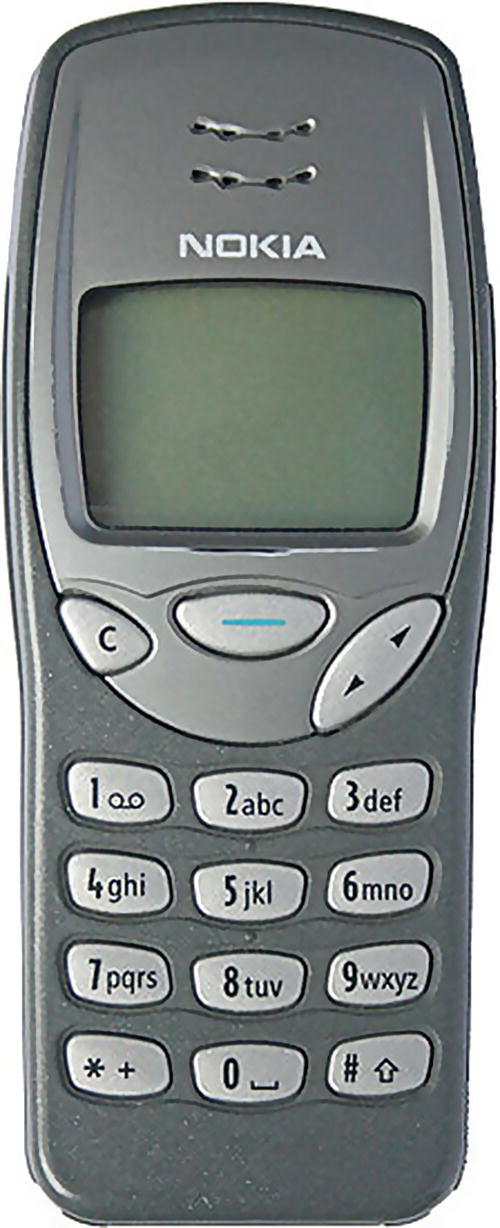4Internal Antenna
The internal antenna emerged around the end of the twentieth century and gained its popularity in merely a few years. Nokia was the first mainstream cell phone company who successfully marketed phones with internal antennas. As shown in Figure 4.1, the Nokia 3210, which came onto the market in 1999, was a huge hit and more than 300 million of them were eventually sold around the world. “Candy‐bar phones,” a nickname for those phones with internal antennas strongly resonates with the European fashion taste, which appreciates minimalism and sleek curves. With that momentum, Nokia successfully eroded Motorola’s market share in Europe.

Figure 4.1 Nokia 3210.
(Source: Reproduced with permission of Nokia.)
After that, there were a few years of de facto draw between Nokia and Motorola, who shared the first and second places on the global chart of cell phone sales. Nokia claimed that it sold the most phones and Motorola insisted that its revenue of cell phones was the highest. Both claims were correct, because Motorola was still holding onto the high‐end market. What happened next was quite theatrical. Nokia wanted to use only candy‐bar phones to conquer the US market but kept failing. US customers didn’t want to give up their love of flip phones, which had been invented by Motorola. Nokia did not want to develop flip phones and hoped, through advertising and customer education, ...
Get Antenna Design for Mobile Devices, 2nd Edition now with the O’Reilly learning platform.
O’Reilly members experience books, live events, courses curated by job role, and more from O’Reilly and nearly 200 top publishers.

